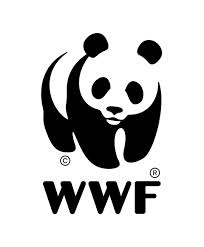New Guide Provides Step-by-Step Instructions for Companies to Navigate Climate Risks and Make Sustainability Resilient
WWF describes specific actions companies, investors, and insurers can take today to help maintain a profitable and socially responsible business model in an era of rapid change
WASHINGTON, November 17, 2020 /3BL Media/ – A new practical guide from World Wildlife Fund (WWF) illustrates steps businesses can take to help maintain profitability and social license to operate in a climate-insecure future. Rising to Resilience: A practical guide for business and nature breaks down the complex idea of planning for instability and managing change—beyond the capabilities of traditional risk management—and can help as companies work to ensure that investments of both time and resources are worthwhile in the long term.
"A corporate sustainability strategy is important, but it’s no substitute for a resilience strategy; reducing environmental impact doesn’t always help a company prepare for the uncertain world we’re now living in,” says Shaun Martin, WWF’s vice president for ecological and social resilience. “Resilience means planning explicitly for continual change. It’s a process, not a fixed goal that can ever be fully achieved. To protect business, people, and nature from increasing risks, we must learn to embrace change, develop flexible strategies, and make wise investments that account for future uncertainty.”
The steps detailed in the guide include:
- Assessing Risk: assembling available knowledge and resources, planning for change, and developing a long-term capacity for informed, flexible management
- Developing a strategy to manage for change, not just persistence
- Implementing local solutions that are nature-friendly, responsive, and flexible
- Monitoring, evaluating, and adaptively managing
A companion guide, Rising to Resilience: How water stewardship can help business build climate resilience, provides some tools that can help businesses prepare for and respond to climate change’s effects on water resources—the primary medium through which climate change impacts are felt. This guide, produced jointly with The Coca-Cola Company, includes a case study detailing the company’s water resilience pilot in Central America.
“As a beverage business that operates in more than 200 countries and territories throughout the world, it is our responsibility to pursue water security in the communities in which we operate,” said Ulrike Sapiro, senior director of water stewardship & sustainable agriculture at The Coca-Cola Company. “Integrating the principles of climate resilience into our water strategy can help us prepare for the ever-evolving effects of climate change. We hope that by using this guide, businesses will further the connection between water security and climate resilience through collective action. Water is a shared resource that we all depend on – and we can make a stronger impact when we all work together.”
“All companies depend on water, whether directly or indirectly, and they must be ready to face the shocks and stressors that are sure to come,” said Bridgette McAdoo, Vice President, Corporate Strategy & Engagement, Freshwater & Food at WWF. “Business now has the opportunity to bridge the gap between climate and water stewardship strategies, broadening the focus from corporate sustainability to global water security.”
In addition to the guides, WWF and The Coca-Cola Company will host a webinar to walk through building resilience strategies and answer specific questions. Representatives from the business, insurance, and finance industries are encouraged to attend. For more information, contact Lorin.Hancock@wwfus.org.
####
About World Wildlife Fund (WWF)
WWF is one of the world’s leading conservation organizations, working in nearly 100 countries for over half a century to help people and nature thrive. With the support of more than 5 million members worldwide, WWF is dedicated to delivering science-based solutions to preserve the diversity and abundance of life on Earth, halt the degradation of the environment and combat the climate crisis. Visit www.worldwildlife.org to learn more and keep up with the latest conservation news by following @WWFNews on Twitter and signing up for our newsletter and news alerts here.




